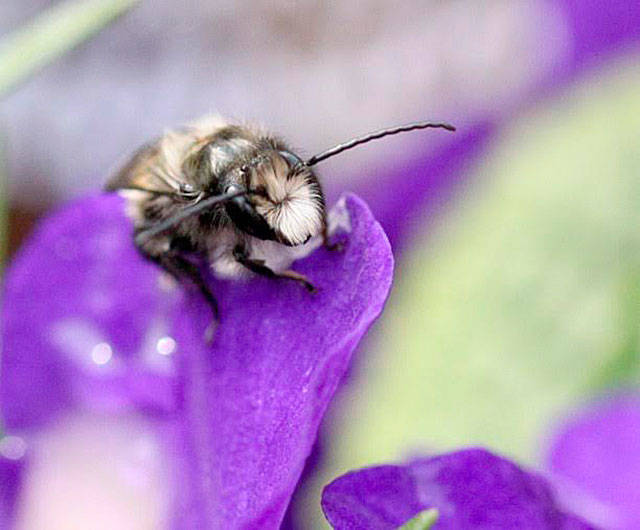Home gardening can be lot of work. With a little encouragement, many species of insects are willing to help.
You can create a thriving environment for beneficial insects in your garden. With a little effort you will be surprised by the results.
Here are some tips for attracting these beneficial buggers.
Bumblebees
Bumblebees are a member of the Bombus genius. The word bombus originates from the Latin meaning booming, buzzing or humming. It is great to have these large pollinators working in the garden. They need a fresh water supply, so place water dishes in the garden to attract them. They favor single petal flowers because it makes it a little easier for them to collect pollen. They also are mainly attracted to the colors blue, violet, white and yellow. Consider planting the herbs such as rosemary, oregano, sage and parsley to attract these and other bees.
Honeybees
Having your own hive of honeybees has its benefits. Not only a swarm of pollinators, but these beneficial insects also provide honey to harvest. If you do not want to maintain a hive, consider providing a water source for the bees and planting flowering plants and trees that bees love. Plant apple and apricot trees or heather and hydrangea shrubs to attract the bees.
Mason bees
Mason bees are docile and easy to raise. Their smooth, slightly hairy, black body commonly misidentifies them as flies. It is important to promote natural colony environments for them in muddy areas, as they need mud to cover their eggs and protect the larvae. They do not destructively excavate their own holes in wood but will enter existing cavities for nesting and hibernation.
Purchase artificial bee houses or create a colony house from a block of wood with 1/4- to 3/8-inch predrilled holes and strategically place them near gardens where the morning sun shines on them. Mason bees are effective spring pollinators of tree fruits, collecting pollen on their abdominal underside body hair, which falls off during flight to spread and pollinate plants on their way to the nest. Consider using mason bees in diverse orchards that bloom in the spring.
Butterflies
Many butterfly species do well here on the Olympic Peninsula. They are beautiful in your garden and are proficient pollinators. Butterflies also need water and often congregate near small puddles of water. Consider adding native plants such as kinnikinnik, salal and wild strawberry to attract butterflies.
Nematodes
A nematode is a microscopic parasitic worm found in soil that often feeds on larva and eggs of insects that can be harmful to your garden such as cabbageworm and cutworm. Nematodes thrive in fresh compost and organic material in your garden soil. They are more active in warmer soils, so consider using mulch to increase their activity.
Ladybugs
Ladybugs eat aphids and mites and are attractive in your garden. Consider sacrificing one of your plants infested with aphids to attract and keep ladybugs. If you buy ladybugs, you may refrigerate them for a few hours to slow them down, so they will not fly off right away. You should release them before dawn in a garden that has plenty of food, water and shelter to convince them to stay in the area.
Scott Stokes is a Master Gardener intern.


